
Bahrain BD 1.50 Kuwait KD 1.50 Oman OR 1.50, Saudi Arabia SR 12.00 UAE DH 10.00 UK £ 3.00, US $ 3.00 VOLUME 21 ISSUE 6 JUNE 2023 Rs. 50 21 YEARS

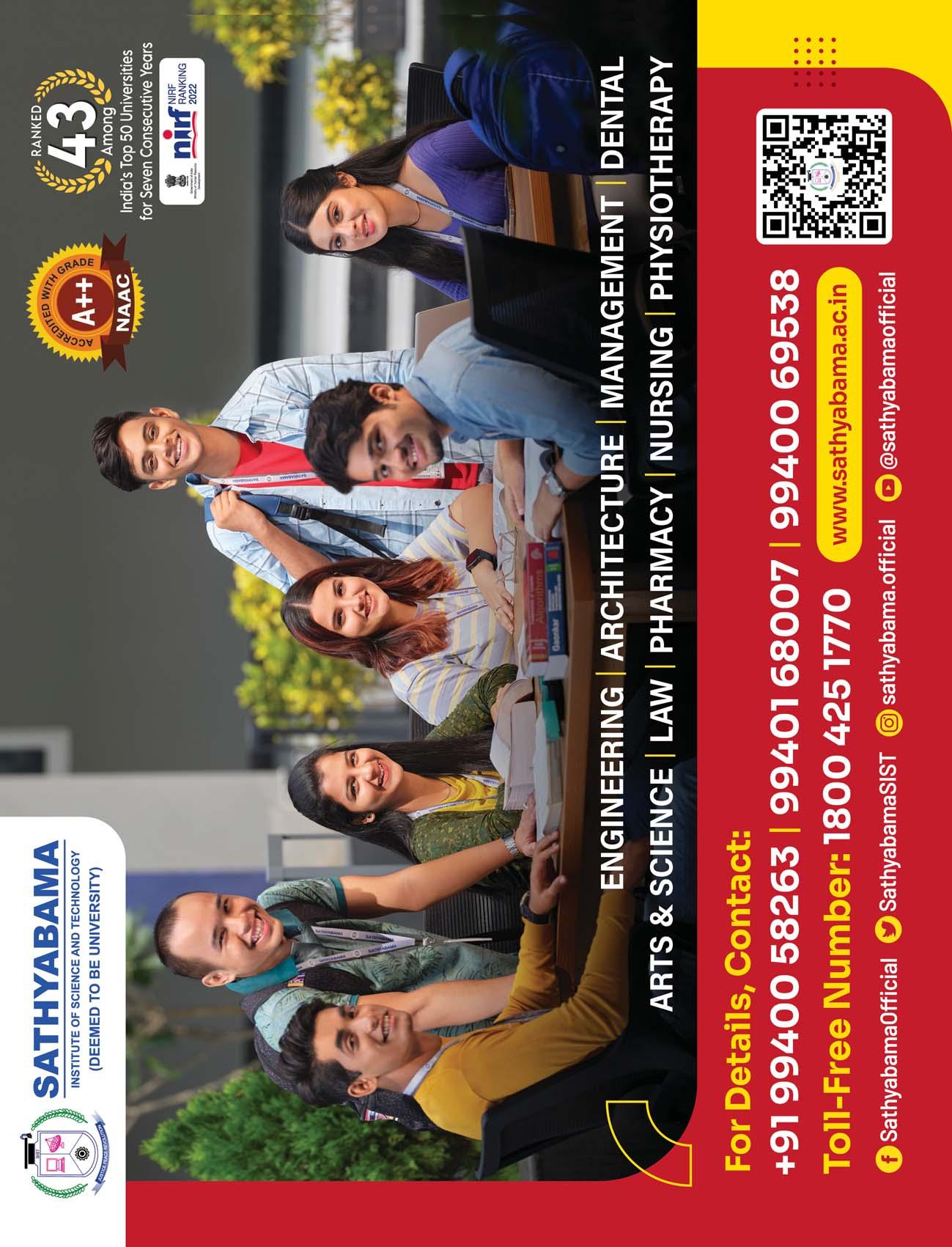
www.seasonalmagazine.com
Managing Editor
Jason D Pavorattikaran
Editor
John Antony Director (Finance)
Ceena
Associate Editor

Carl Jaison
Senior Editorial Coordinator Jacob Deva
Senior Correspondent
Bina Menon
Creative Visualizer
Bijohns Varghese
Photographer
Anish Aloysious Office Assistant Alby CG
Correspondents
Bombay: Rashmi Prakash
Delhi: Anurag Dixit Director (Technical)
John Antony
Publisher Jason D Pavorattikaran
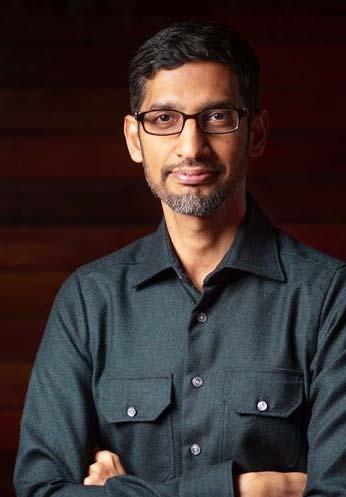
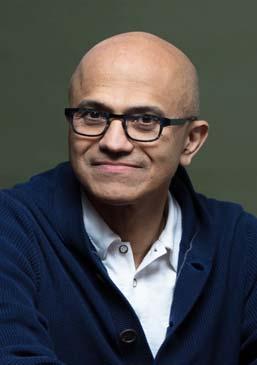

Editorial & Business Office
Cochin: 36/1924 E, Kaloor-Kadavanthra Road, Near IGNOU, Kaloor, Cochin-17.
Ph:0484- 2345876, 2534377, 2340080 Mob. 09947141362
Delhi: H.No: P-108, Uppal Southend, Sector 48, Sohna Road, Gurgaon, Haryana – 122018
Ph: 9891771857|099471 41362
Mumbai: 202, Woodland Heights Building, St. Martins Road, Bandra West, Mumbai400 050 Mob: 919947141362
Bangalore: House No: 493, Block 3 3rd Main, HBR Layout, Bangalore-4209731984836, Email:skmagazine@gmail.com www.seasonalmagazine.com
UK Office: “CRONAN”, Boundaries Road Feltham, Middlesex, UK TW13 5DR Ph: 020 8890 0045, Mob: 00447947181950 Email: petecarlsons@gmail.com

Reg No: KERENG/2002/6803
Until now, more often than not, economic crises were all singular and well defined. The world will either have slowing down demand with its side effect of lower inflation, or the world will have high inflation with its side effect of a surge in demand.

But this time around, things are slightly different. Confusing even many economists, the world is witnessing high inflation but with a slowdown in demand. Now, this is something not only pretty strange, but something that leaves not many levers for the governments and central banks to act upon.
This is one reason why many thought leaders are citing that the world is in a polycrisis. To add fuel to this fire, are the various global developments like the unprecedented war by Russia in Ukraine, the equally unprecedented economic slump in China, the very much anticipated but unprepared-for population degrowth in Europe, and the disruptive advent of generative AI like ChatGPT, to cite just a few.
While many factors are behind all these diverse challenges, for the highly observant mind, it can easily be seen that one social trend is behind it all. In fact, it is not just a social trend, but something that runs deeper, with its roots in the human psyche itself. It is nothing but the human tendency to deliver excesses, in both committing an act and in later correcting that act.
For those who know human physiology in some depth, parallels can easily be seen in how the cells and systems of our body
Subscriptions Available on iPhone/iPad & Android All health related articles are for first information purposes only. Always consult your doctor before taking any decison affecting your health.
MAGAZINE
Seasonal
Printed & Published by Jaison D on behalf of PeteCarlson Solutions Pvt. Ltd. at Cochin. Printed at Rathna Offset Printers, Chennai-14. All Rights Reserved by PeteCarlson Solutions Pvt. Ltd. No part of this publication may be reproduced by any means, including electronic, without the prior written permission of the publisher. MEMBER SEASONAL MAGAZINE EDITORIAL
react to various stimuli. For instance, the much discussed dopamine cycle. There is a baseline dopamine level, but achievement, rewards or euphoria spikes dopamine, but it cannot stay there forever.
Soon it will be time for a fall, and when dopamine levels fall, it will not stop at the baseline level, but plummet sharply below it. In fact, higher the rise above baseline, higher will be the fall below it, sending happy and euphoric people to sudden gloom and doom, within a matter of hours. People who don’t realise this mechanism, often go after reward-seeking behaviour again and again, be it partying or drugs, to get a new high, only to fall even more deeper, and thus maintaining this vicious cycle of addiction.
Eerily, almost the same thing is happening in global economics too. The world went through a sudden demand slump due to Covid, and central banks responded with easy liquidity by way of lower and lower interest rates. And the otherwise smart companies like the tech majors started thinking that this will remain the new normal forever, and invested more and more into a digital future and in the engineers needed to run that future.
And tech majors alone were not to blame. Some of the otherwise most prudent investors and lenders, like the PE and VC funds, imagined that profits in their funded startups are not important anymore - in this new normal - but that valuations or marketcaps are enough to sustain operations forever.

But inevitably, like the dopamine slump, everything has to correct deeply for the
economy to find itself in a stable ground again. Take the recent failure of Silicon Valley Bank in the US that started the most recent leg of the ongoing contagion. SVB was the lender of choice for startups, and the collateral was often the share pledges by promoters of these startups.
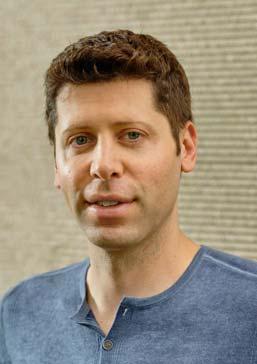
Even more seriously, these young millionaire and billionaire promoters also parked much of their funds in SVB. But when the inevitable correction in the markets came, and the mass layoffs started, the outlook turned suddenly dark, the value of the pledged stocks became only a fraction of their peak values, and the promoters couldn’t take back their deposits in time, and everything came crashing down like a castle of cards.
The world had seen this coming, yet walked into it, mainly because everyone else was doing it. Yet, there have been notable exceptions to this trend across the world. Quite a few companies stood their ground and focused on growing their bottomline along with their topline, paid generous but prudent dividends, and kept aside much for a challenging phase that they saw coming.
There are quite a few measures that governments and companies can take to avoid such excessive behaviours. Firstly, it is important to realise that valuations can never substitute for profits. Secondly, it is important not to over anticipate the durability of an ongoing trend, especially if it feels too good to be true. Such a timely realisation would have been enough to avoid the kind of mass layoffs being witnessed now.
Last but not least comes an objective called sustainable and inclusive development. Governments should realise that the per capita income of their people is way more important than the GDP. Companies should realise that a mindless hiring and firing culture would gradually result in top talents not willing to work at all in their sectors. It doesn’t make sense for the companies themselves to always aim for aggressive valuation growth or even profit growth, but to always choose inclusive and sustainable growth for all stakeholders.
John Antony
SEASONAL MAGAZINE
CONTENTS
NEW CHALLENGES & OPPORTUNITIES FROM AI FOR INDIA’S PRIVATE & DEEMED UNIVERSITIES

Once again, a new academic year is fast approaching and the Indian higher education scene is buzzing with admission activities. Private and deemed universities have been playing an ever increasing role in the country’s higher education, as the nation relies on them to enhance the Gross Enrollment Ratio (GER) to acceptable levels.
ICFAI FOUNDATION FOR HIGHER EDUCATION SOARING HIGHER ON ACADEMICS AND RESEARCH

From international tie-ups to poverty alleviation, and from business case studies to multidisciplinary research, IFHE is making its presence felt across higher education and research in business..
TRUE INTERNATIONAL SCHOOLING FINALLY ARRIVES IN KOCHI
Cochin International School has opened its doors recently for students to experience IB & Cambridge schooling in the city, with premium features including over 2 lakh sq ft of built-up area,

SOA’S EDGE IN PLACEMENTS AND STARTUP INCUBATION
The Odisha based SOA deemed-to-be-university has been excelling in placements year after year, moving up the rungs by way of both quantity and quality of job offers from leading corporates, as well..
SOLUTIONS TO NATIONAL CHALLENGES THROUGH RESEARCH & ACADEMICS
SRMIST, the flagship of SRM Group of Universities, led by its Founder & Chancellor and sitting Lok Sabha MP Dr. TR Paarivendhar, is emerging as a powerhouse in research.

JSSAHER IS FORGING AHEAD IN ALL KEY DOMAINS THAT MATTER
For Mysuru headquartered JSS Academy of Higher Education & Research, each academic year is a quest to outdo itself, as there are not many private sector peers that are far ahead of it. And this deemed-to-be university is doing it with elan year after..

SATHYABAMA IS THE PLACE TO STUDY AI, ROBOTICS, BLOCKCHAIN, IOT & MORE
Chennai based deemed university Sathyabama Institute of Science & Technology is fast emerging as one of the leading destinations to study futuristic domains including AI, Robotics, Blockchain, Internet of..
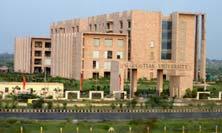


KARUNYA’S SOLUTIONS FOR GLOBAL WELLBEING
Coimbatore based deemed-tobe university, Karunya Institute of Technology & Sciences (KITS) is fast emerging as a powerhouse in both academics and research with the highest NAAC A++ accreditation, and with funded projects worth Rs 25 crore..
HOW GALGOTIAS UNIVERSITY IS GROOMING EXCEPTIONAL ACHIEVERS
What have the StockPe cofounder Shubham Rawal, E&Y Partner Dr. Avantika Tomar and Aaj Tak Anchor Shubhankar Mishra have in common? Many things may be, as they are all young high achievers, but mainly they are all alumni of Galgotias..
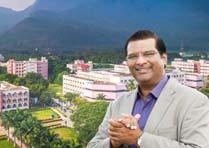
SEASONAL MAGAZINE
UP CM YOGI ADITYANATH ENTERS 7th YEAR OF STELLAR LEADERSHIP
India’s most populous state of Uttar Pradesh has completed six years under the leadership of Chief Minister Yogi Adityanath, and the state has grown leaps and bounds in various sectors including investments, infrastructure, agriculture, tourism, socio-economic development, law and order, quality assurance and ease of doing business.

THE MANY MIRACLES OF SLEEP
New research has discovered why sleep is so important to the brain: It not only flushes away the brain's waste products, sleep also consolidates your memory and protects you against the risk of Alzheimer's disease among other benefits. Here’s what actually happens in your brain if you get a good night’s sleep – and if you ..

PURVA BACK ON A RAPID GROWTH TRACK
Bengaluru headquartered real estate development major Puravankara Group has had several firsts to its credit in its chequered history since its inception in 1975. Starting from the first ever multi-storey project in Bengaluru, Founder & Chairman Ravi Puravankara led the group’s flagship firm..

THE JOBS LEAST LIKELY TO BE TAKEN OVER BY ARTIFICIAL INTELLIGENCE, FOR NOW

Amid the talk of artificial intelligence replacing workers, experts say there are some jobs computers aren’t taking – at least for a while.
KIA'S TESLA KILLER
Kia's new three-row electric SUV is a surprising contender to emerge as the biggest threat to Tesla.

NVIDIA IS SUDDENLY AN ‘AI CHIP MAKER’: ENTERS BIG LEAGUE AS A $1 TRILLION FIRM
The chipmaker originally known for its Graphic Processing Units (GPUs) used in gaming computers, later reinvented itself as the blockchain posterboy as its GPUs were heavily used for
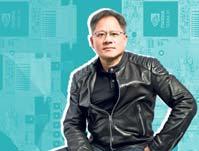
THE ONE THING THAT DETERMINES SUCCESS, ACCORDING TO STEVE JOBS

I'm not particularly smart. I'm not particularly athletic. I don't have any real talents (when talent is the ability to learn a subject or..
ARTIFICIAL INTELLIGENCE
One of the many recent mysteries is why hundreds of extremely intelligent and rich people think that a moratorium on further development of artificial intelligence is feasible, or that a ..

PROTECT YOURSELF AGAINST 10 COMMON TRAVEL SCAMS
Tips on how to avoid swindles, plus a sampling of destinations where tourists are at risk.
PROSPECTS UP FOR PRESTIGE AS HEADWINDS TURN TO TAILWINDS

What sets apart a leader in any sector is how it performs during downturns rather than in good times. The first three quarters of this fiscal delivered serious headwinds for the entire real estate sector, as it witnessed.. unprecedented rate hikes by Reserve Bank of India (RBI) in its bid to contain the inflation contagion that hit Indian..

SEASONAL MAGAZINE
NEW CHALLENGES &
OPPORTUNITIES FROM AI
FOR INDIA’S PRIVATE & DEEMED UNIVERSITIES
NEW CHALLENGES & OPPORTUNITIES FROM AI FOR INDIA’S PRIVATE & DEEMED UNIVERSITIES

SEASONAL MAGAZINE COVER STORY
ONCE AGAIN, A NEW ACADEMIC YEAR IS FAST APPROACHING AND THE INDIAN HIGHER EDUCATION SCENE IS BUZZING WITH ADMISSION ACTIVITIES. PRIVATE AND DEEMED UNIVERSITIES HAVE BEEN PLAYING AN EVER INCREASING ROLE IN THE COUNTRY’S HIGHER EDUCATION, AS THE NATION RELIES ON THEM TO ENHANCE THE GROSS ENROLLMENT RATIO (GER) TO ACCEPTABLE LEVELS.

SEASONAL MAGAZINE
Though the clouds of Covid have reemerged and are lingering on the horizon, nobody expects it to play spoilsport this year to the extent of lockdowns and such extreme measures. But a new kind of challenge has reared its head in the form of Artificial Intelligence (AI), or more specifically, Generative AI or Large Language Models (LLMs) whose first and most flamboyant example has been ChatGPT.
College essays used to be a benchmark that separated the talented students from the rest of the class. Similar was the case with mathematical problem solving. It was something that calculators or even the usual computer programs couldn’t help a student with. And in recent years, yet another of such benchmarks had emerged, which was writing software programs to solve challenging problems in different domains.

But, in one stroke, ChatGPT and its likes have made it all history. This seemingly revolutionary software system from a startup named OpenAI has stormed the classrooms with the power of artificial intelligence. It can write college level essays that fetch A grades, it can solve complex maths problems, and it can not only write software programs but even debug your programs before you finish reading this sentence.
Its proponents, and much of the tech world, are saying that this technological advancement is not to be feared, but embraced. Their logic
is that just like how calculators, personal computers and the internet didn’t destroy education, but only enhanced it, the likes of ChatGPT will only add great value to education.
There are however two major flaws to this argument. The first flaw is whether calculators, computers & the world wide web have really enhanced education. For sure, they have had positive effects, but to ignore their negatives would be grossly untruthful.
The ubiquitous presence of calculators in everything from computers to phones and even smartwatches now, have taken students’ arithmetical skills to abysmally low levels like it has never happened in modern human history. Doing mental maths is not only joyous, but it gives a powerful conceptual framework about how numbers in different proportions can be made to work together to reveal the meaning of various operations in real world settings.
When it comes to computers and the internet, some may think it is more difficult to find the negatives, but this is absolutely not true. For one, they have redefined - for the worsewhat is truth. Truth has forever been tinted with subjective opinions masquerading as information. What is the source for truth today? Google it? Or read its Wikipedia entry? Anyone who knows the basics of digital tech realizes that such things can be gamed.
So the first fallacy to counter is that
calculators, computers and the internet were choke full of positives, with no negatives involved. It can be clearly seen that while they have made humanity more productive, it was at the cost of making it dumber. People today have no passion or energy to find out the truth from real world encounters, but just take the easy way out of parroting the digital version of truth that is readily available at a click.
However, the second reason why the likes of ChatGPT will not end up only adding value to education, but will have serious negative impacts too, has got to do with how critically different this innovation is compared with earlier ones like calculators, computers or the internet.
But to understand that we have to first understand how ChatGPT works. Though it is touted as a piece of true artificial intelligence, in reality it is only a kind of machine learning system called Large Language Model (LLM). A rudimentary model of such


SEASONAL MAGAZINE
a system is the auto-complete seen in email and chat editors, in which based on your earlier responses (as well as other similar responses from other people) the system guesses a probable set of suggestions from which you can choose from.
LLMs take this core idea to an exponential level, by training the system on a massive amount of data, like the internet, publicly available books, news, periodicals, public chats, forum discussions, social media, published research studies, code repositories and the likes to detect millions of patterns about how pieces of information correlate to each other, and even more importantly how human beings communicate about such data.
So, what are the pitfalls about using such a system in education? One is the truthfulness of its output, or more precisely the lack of absolute truthfulness of the text it generates. Just like how its sources like websites, user edited encyclopaedias like Wikipedia, public books, partisan news outlets etc have false information, ChatGPT’s output will also be seriously imperfect, and therefore especially unsuitable for academic rigour.
But the real issue with ChatGPT is not this lack of absolute truth, but the fact that it presents this imperfect output as the perfect truth using human-like language constructs that make the text very much plausible and persuasive.
Renowned researchers in AI like Arvind Narayanan of Princeton have called out ChatGPT for this kind of dishonest behaviour, and have boldly stated that it is an example of a bullshitter program, based on what bullshitting is, in an academic perspective, which is pushing partial truths or subjective opinions as the absolute truth.
There are even greater dangers for the society from such LLMs like ChatGPT according to the ace computational linguist Emily Bender of University of Washington, which she says is

unnecessarily and dangerously mimicking human behaviour - with false or unreal emotions - for its mass appeal. She has called out LLMs as stochastic (probable but never precise) parrots and has decried efforts by OpenAI CEO Sam Altman to pull down humanity to the level of stochastic parrots for the glorification of their ChatGPT product.
Another critical view of LLMs like ChatGPT, Microsoft Bing Chat, Google Bard etc has been about how these tech firms are seeking monopolistic and rent-seeking behaviour from the enormous software expertise and computing power they have amassed to gobble up all the public data without permission or regard for copyright, and then profiteering from it on a massive scale. Indeed, the swift rise of OpenAI to a $29 billion startup on the back of paid monthly subscriptions should be an eye opener for everyone.
Apart from its lack of truthfulness, mimicking of humanity, false or unreal emotions, and rent-seeking behaviour on public, proprietary or copyrighted data, the most disturbing facet of LLMs like ChatGPT is how much more dumber it will make our students and eventually humanity as a whole.
If calculators killed mental maths, and computers & internet killed real life learning through observation & experience, the likes of ChatGPT are destined to dumb down things to even deeper levels by offering readymade essays, machine solved maths theorems and machine debugged code that will invariably result in a lack of analytical, critical and problem solving skills in our young generations, which we increasingly need for solving humanity’s emerging problems.
However, the advent of Generative AI and programs like ChatGPT are not without opportunities too. Higher educational institutions in India can tame this beast and make it act as per their sector’s long term visions, if they are aware of the opportunities this opens up. To mention just one, new hot skillsets have emerged due to ChatGPT like prompt engineering, chain of thought prompting, and even security skills against malicious acts like prompt injection into LLMs.

And ChatGPT is just the beginning. Newer Generative AI models that achieve text-to-image like DALL-E 2, and 2D-to-3D renderers have already arrived, and the next horizon would be text-to-video. And the challenges it opens up (for instance, fake news) will be equal to the innovative uses (say, highly creative movies on shoestring budgets) it can be applied to. Universities would do well to keep their eyes and ears open to such opportunities and see how they can add value to their research projects as well as academic delivery.

SEASONAL MAGAZINE
BUT THE REAL ISSUE WITH CHATGPT IS NOT THIS LACK OF ABSOLUTE TRUTH, BUT THE FACT THAT IT PRESENTS THIS IMPERFECT OUTPUT AS THE PERFECT TRUTH USING HUMAN-LIKE LANGUAGE CONSTRUCTS THAT MAKE THE TEXT VERY MUCH PLAUSIBLE AND PERSUASIVE.
THE CHIPMAKER ORIGINALLY KNOWN FOR ITS GRAPHIC PROCESSING UNITS (GPUS) USED IN GAMING COMPUTERS, LATER REINVENTED ITSELF AS THE BLOCKCHAIN POSTERBOY AS ITS GPUS WERE HEAVILY USED FOR THE MINING OF BITCOIN, ETHEREUM AND OTHER SUCH LEADING CRYPTOS. EVEN WHILE BOTH THE GAMING AND CRYPTO BUSINESSES HAVE SLOWED DOWN, NVIDIA HAS SUDDENLY TOOK THE MARKET BY SURPRISE BY REPORTING A QUARTERLY PROFIT OF MORE THAN $2 BILLION AND REVENUES OF $7 BILLION LAST WEEK, BOTH HIGHER THAN WALL STREET PROJECTIONS. NVIDIA’S SURGING FORTUNES NOW COMES ON THE BACK OF RISING DEMAND FOR ITS GPUS BEING USED FOR THE GENERATIVE AI PROGRAMS LIKE CHATGPT.


hares of Nvidia Corporation, a pioneering graphics chipmaker that is already one of the world’s most valuable companies, have been surging after the California company forecast a sharp jump in revenue last Thursday (May 25). Riding on its dominance in the gaming and artificial intelligence (AI) sectors, and the potential that the generative AI holds in reshaping the technology sector, Nvidia breached the $1 trillion market cap on May 30, making it the first US chipmaker to enter the trillion-dollar club and ahead of storied competitors such as Intel and AMD.
The company had reported a quarterly profit of more than $2 billion and revenues of $7 billion last week, both significantly higher than Wall Street projections. The surge in the demand for graphics processing units (GPUs) –advanced chips which Nvidia makes, that are put to specialised uses – is driven by artificial intelligence applications such as those being released by OpenAI and Google. Buoyant demand for chips in data centres is the primary reason why Nvidia has been surging, with the latest trigger being the generative AI rush. Apple Inc, Alphabet Inc, Microsoft Corp and Amazon.com Inc are the other US companies that are part of the trilliondollar club. While Facebook owner Meta Platforms Inc had touched this milestone in 2021, it has since slid down
to a market cap of around $650 billion. Traditionally, the CPU, or the central processing unit, has been the most important component in a computer or a server, a market dominated by Intel and AMD. GPUs are relatively new additions to the computer hardware market and were initially sold as cards that plug into a personal computer’s motherboard to basically add computing power to an AMD or Intel CPU.
Nvidia’s main pitch over the years has been that graphics chips can handle computation workload surge, such as what is required in high-end graphics for gaming or animation applications, way better than standard processors. AI applications too require a tremendous amount of computing power and, as a result, are progressively getting GPUheavy in terms of their backend hardware. Most of the advanced systems used for training generative AI tools now deploy as many as half a dozen GPUs to every one CPU used, completely changing the equation where GPUs were seen as just add-ons to CPUs. Nvidia completely dominates this global market for GPUs and is likely to maintain this lead well into the foreseeable future, the primary reason for the surge in stock valuations.
According to Jen-Hsun “Jensen” Huang, the Taiwanese-American electrical engineer who co-founded Nvidia and is the President and CEO of the company, the data centres of the past, which were largely CPUs for file

COVER STORY
SEASONAL MAGAZINE
Jensen Huang
retrieval, are going to be, in the future, focussed on generative data. “Instead of retrieving data, you’re going to retrieve some data, but you’ve got to generate most of the data using AI … So instead of millions of CPUs, you’ll have a lot fewer CPUs, but they will be connected to millions of GPUs,” Huang, who is known for as much for his phenomenal business acumen as for his penchant for turning up in a trademark black leather jacket, told CNBC in an interview earlier this month.
Nvidia was co-founded in 1993 by Huang, Chris Malachowsky, a Sun Microsystems engineer, and Curtis Priem, a graphics chip designer at IBM and Sun Microsystems. The three men famously founded the company in a meeting at a roadside diner in San Jose, primarily looking to solve the computational challenge that video games posed, with some initial venture capital backing from Sequoia Capital

and others. Before it was formally christened, the co-founders had named all their files NV, short for “next version”. This moniker was subsequently combined with “invidia”, the Latin word for envy.
Today, if Taiwan-based foundry specialist TSMC is now unquestionably the most important backend player in the semiconductor chips business, Nvidia – alongside Intel, AMD, Samsung and Qualcomm – line up on the front end. For nearly three decades, Nvidia’s chips have been coveted by gamers shaping what’s possible in graphics and dominating much of the market since it first popularised the term graphics processing unit with its GForce 256 processor. Now the Nvidia GPU chips such as its new ‘RTX’ range are at the forefront of the generative AI boom based on large language models. What is really remarkable about Nvidia is the company’s dexterity at shrugging
off near bankruptcies (at least three times in the last 30 years) and Huang’s uncanny ability to catch new business waves. The company caught the gaming wave really early on, hitched on to the crypto wave and emerged as the most sought after chip for crypto mining hardware, tried riding on the metaverse wave too and has now latched on successfully to the AI wave. And all along, it has adapted its GPUs for each of these diverse requirements, edging out the traditional CPU makers.
Catching the latest AI wave has meant that Nvidia’s data centre business recorded a growth of nearly 15 per cent during the first quarter of this calendar year versus flat growth for AMD’s data centre unit and a sharp decline of nearly 40 per cent in Intel’s data centre business unit. Alongside the application of the GPUs, the company’s chips are comparatively more expensive that most CPUs on a per unit basis, resulting in far better margins.
Analysts say that Nvidia is ahead of the others in the race for AI chips because of its proprietary software that makes it easier to leverage all of the GPU hardware features for AI applications. According to Huang, Nvidia is likely to maintain the lead as the company’s software would not be easy to replicate.
“You have to engineer all of the software and all of the libraries and all of the algorithms, integrate them into and optimise the frameworks, and optimise it for the architecture, not just one chip but the architecture of an entire data centre,” he was quoted by Reuters on a call with analysts last week.
And it’s not just the chips, but Nvidia has the systems that back the processors up and the software that runs all of it, making it a full stack solutions company. And now, the data centre segment is roughly 70 per cent of Nvidia’s revenue mix, with over half of that is directly related to large language models (LLMs) and generative AI tools such as ChatGPT and Google Bard.
In addition to GPU manufacturing, Nvidia offers an application programme interface – or API, a set of defined instructions that enable different applications to communicate with each other – called CUDA, which allows the
SEASONAL MAGAZINE
creation of parallel programs using GPUs and are deployed in supercomputing sites around the world. It also has a leg in the mobile computing market with its Tegra mobile processors for smartphones and tablets, as well as products in the vehicle navigation and entertainment systems. Nvidia’s resilience is a case study in a business segment that has very high entry barriers and offers a phenomenal premium for specialisation. The way the global semiconductor chip industry works today, it is dominated almost entirely by some countries and, in turn, a handful of companies. For instance, two nations – Taiwan and South Korea – make up about 80 per cent of the global foundry base for chips.
TSMC, the world’s most advanced chipmaker, is headquartered in Taiwan, while only a handful of companies – Samsung, SK Hynix, Intel and Micron – can put together advanced logic chips. One firm in the world – the Netherlands based ASML – has the capability to produce a type of machine called an EUV (extreme ultraviolet lithography) device, without which making an advanced chip is simply not possible. So much so, that when US President Joe Biden was in the Netherlands in January, he asked the Dutch government to block exports from ASML to China as part of the efforts by the US to cut off Beijing’s ability to make advanced semiconductors, according to a Reuters report. Cambridge-based chip designer Arm is the world’s biggest supplier of chip design elements used in products from smartphones to games consoles (which Nvidia was keen to acquire). It is a nearly closed manufacturing ecosystem with very high entry barriers, as China’s SMIC, a national semiconductor champion that is now reportedly struggling to procure advanced chip making equipment after a US-led blockade, is finding out.
In this market, Nvidia, almost comprehensively, dominates the chips used for high-end graphics-based applications and as a result, has come to dominate multiple end-use sectors that include gaming, crypto mining and now AI.
And as more AI inferencing starts to happen on local devices, with an
increasing number of people accessing tools such as ChatGPT and Google’s Bard, personal computers will progressively need powerful yet efficient hardware to support these complex tasks. For this, Nvidia is pushing its new ‘RTX’ range of GPUs that it claims is adapted for low-power inferencing for AI workloads. The GPU essentially operates at a fraction of the power for lighter inferencing tasks, while having the flexibility to scale up to high levels of performance for heavy generative AI workloads.
To create new AI applications, Nvidia is also pushing developers to access a complete RTX-accelerated AI development stack running on Windows 11, making it easier to develop, train and deploy advanced AI models. This starts with the development and fine-tuning of models with optimised deep learning frameworks available via the Windows Subsystem for Linux – the open source operating system that a lot of developers rely on. Developers can then move to the cloud to train on the same Nvidia AI stack, which is available from every major cloud service provider, and subsequently optimise the trained models for fast inferencing with tools such as Microsoft Olive.
According to the company, the developers can ultimately deploy their AI-enabled applications and features to an install base of over 100 million RTX PCs and workstations that have been
optimised for AI, in effect making it an almost end-to-end solutions stack for those looking at developing or adapting AI applications. “AI will be the single largest driver of innovation for Windows customers in the coming years,” according to Pavan Davuluri, corporate vice president of Windows silicon and system integration at Microsoft.
In 30 years, Nvidia died almost thrice, each time shedding flab and successfully managing to pivot to a new growth centre. The company faced a major setback last year after regulators blocked a $40 billion takeover of the Softbank-backed British design company Arm over competition concerns.

Its biggest risk perhaps stems from its relianceon TSMC to make nearly all its chips, leaving it vulnerable to geopolitical shocks.
But the US Chips Act passed last year has set aside $52 billion to incentivise chip companies to manufacture on US soil and TSMC is spending some $40 billion to build two chip fabrication plants in Arizona. That should somewhat derisk US chip makers such as Nvidia, alongside Intel and AMD, going forward.
Specialised hardware manufacturers such as Nvidia are projected to be big winners here as AI gets more “intelligent” and progressively moves to each and every laptop or desktop.
(By Anil Sasi for Indian Express)
SEASONAL MAGAZINE
Artificial intelligence could lead to the extinction of humanity, experts - including the heads of OpenAI (ChatGPT creator) and Google Deepmind - have warned. And dozens have supported a statement published on the webpage of the Centre for AI Safety, which reads “Mitigating the risk of extinction from AI should be a global priority alongside other societalscale risks such as pandemics and nuclear war.” But other experts in AI say that these current winners in the AI turf are using such doomsday scenarios to camoflauge the near term complications from their own projects like ChatGPT.
am Altman, chief executive of ChatGPT-maker Open AI, Demis Hassabis, chief executive of Google DeepMind and Dario Amodei of Anthropic have all supported the statement. The Centre for AI Safety website suggests a number of possible disaster scenarios, like the following:
AIs could be weaponised - for example, drug-discovery tools could be used to build chemical weapons. AI-generated misinformation could destabilise society and “undermine collective decision-making”. The power of AI could become increasingly concentrated in fewer and fewer hands, enabling “regimes to enforce narrow values through pervasive surveillance and oppressive censorship”. Enfeeblement, where humans become dependent on AI “similar to the scenario portrayed in the film Wall-E”.
Dr Geoffrey Hinton, who issued an earlier warning about risks from superintelligent AI, has also supported the Centre for AI Safety’s call. Yoshua Bengio, professor of computer science at the university of Montreal, has also signed.

Dr Hinton, Prof Bengio and NYU Professor Yann LeCun are often described as the “godfathers of AI” for their groundbreaking work in the field - for which they jointly won the 2018 Turing Award, which recognises outstanding contributions in computer science.

But Prof LeCun, who also works at Meta, has said these apocalyptic warnings are overblown tweeting that “the most common reaction by AI
researchers to these prophecies of doom is face palming”.
Many other experts similarly believe that fears of AI wiping out humanity are unrealistic, and a distraction from issues such as bias in systems that are already a problem.
Arvind Narayanan, a computer scientist at Princeton University, has previously told the BBC that sci-fi-like disaster scenarios are unrealistic: “Current AI is nowhere near capable enough for these risks to materialise. As a result, it’s distracted attention away from the near-term harms of AI”.
Oxford’s Institute for Ethics in AI senior research associate Elizabeth Renieris told BBC News she worried more about risks closer to the present.
“Advancements in AI will magnify the scale of automated decision-making that is biased, discriminatory, exclusionary or otherwise unfair while also being inscrutable and incontestable,” she said. They would “drive an exponential increase in the volume and spread of misinformation, thereby fracturing reality and eroding


the public trust, and drive further inequality, particularly for those who remain on the wrong side of the digital divide”.
Many AI tools essentially “free ride” on the “whole of human experience to date”, Ms Renieris said. Many are trained on human-created content, text, art and music they can then imitateand their creators “have effectively transferred tremendous wealth and power from the public sphere to a small handful of private entities”.
But Centre for AI Safety director Dan Hendrycks told BBC News future risks and present concerns “shouldn’t be viewed antagonistically”. Addressing some of the issues today can be useful for addressing many of the later risks tomorrow,” he said.
Media coverage of the supposed “existential” threat from AI has snowballed since March 2023 when experts, including Tesla boss Elon Musk, signed an open letter urging a halt to the development of the next generation of AI technology.

COVER STORY
SEASONAL MAGAZINE
Dr Geoffrey Hinton
Yann LeCun
Prof Bengio
Arvind Narayanan

That letter asked if we should “develop non-human minds that might eventually outnumber, outsmart, obsolete and replace us”. In contrast, the new campaign has a very short statement, designed to “open up discussion”. The statement compares the risk to that posed by nuclear war. In a blog post OpenAI recently suggested superintelligence might be regulated in a similar way to nuclear energy: “We are likely to eventually need something like an IAEA [International Atomic Energy Agency] for superintelligence efforts” the firm wrote.
Both Sam Altman and Google chief executive Sundar Pichai are among technology leaders to have discussed AI regulation recently with the British Prime Minister .
Speaking to reporters about the latest warning over AI risk, Rishi Sunak stressed the benefits to the economy and society. “You’ve seen that recently it was helping paralysed people to walk, discovering new antibiotics, but we need to make sure this is done in a way that is safe and secure,” he said.
“Now that’s why I met last week with CEOs of major AI companies to discuss what are the guardrails that we need to put in place, what’s the type of regulation that should be put in place to keep us safe.
“People will be concerned by the reports that AI poses existential risks, like pandemics or nuclear wars. I want them to be reassured that the UK government is looking very carefully at this.”
He had discussed the issue recently with other leaders, at the G7 summit of leading industrialised nations, Mr Sunak said, and would raise it again in the US soon. The G7 has recently created a working group on AI.
(By Chris Vallance for BBC)
THE JOBS LEAST LIKELY TO BE TAKEN OVER BY ARTIFICIAL INTELLIGENCE, FOR NOW
AMID THE TALK OF ARTIFICIAL INTELLIGENCE REPLACING WORKERS, EXPERTS SAY THERE ARE SOME JOBS COMPUTERS AREN’T TAKING – AT LEAST FOR A WHILE.
ince the start of the industrial revolution, there have been threats that new machines – from mechanised looms to microchips – would usurp human jobs. For the most part, the humans have prevailed. Now, say some experts, with AI ubiquity on the horizon, the threat’s being realised: the robots really are coming for some jobs.
A March 2023 report from Goldman Sachs estimated that AI capable of content generation could do a quarter of all the work currently done by humans. Across the European Union and US, the report further notes, 300 million jobs could be lost to automation. And that could be dire, says Martin Ford, author of Rule of the Robots: How Artificial Intelligence Will Transform Everything.
“It's not just that this would happen to individuals, but it could be pretty systemic,” he says. “It could happen to a lot of people, potentially quite suddenly, potentially all at the same time. And that has implications not just for those individuals, but for the whole economy.”

Thankfully, it’s not all bad news. The experts issue their warnings with a caveat: there are still things AI isn’t capable of –
tasks that involve distinctly human qualities, like emotional intelligence and outside-the-box thinking. And moving into roles that centre those skills could help lessen the chances of being replaced.
“I think there are generally three categories that are going to be relatively insulated in the foreseeable future,” says Ford. “The first would be jobs that are genuinely creative: you’re not doing formulaic work or just rearranging things, but you're genuinely coming up with new ideas and building something new.”
While a robot may ostensibly provide a faster diagnosis, patients will still want humans to guide and educate them (Credit: Getty Images)
That doesn’t necessarily mean all jobs that are considered ‘creative’ are safe. In fact, things like graphic design and visual art-related roles may be among the first to go; basic algorithms can direct a bot to analyse millions of images, allowing AI to master aesthetics instantly. But there’s some security in other kinds of creativity, says Ford: “in science, and medicine and law … people whose job is coming up with a new legal strategy or business strategy. I think that there's going to continue to be a place there for human beings”.

SEASONAL
MAGAZINE
The second insulated category, he continues, is jobs that require sophisticated interpersonal relationships. He points to nurses, business consultants and investigative journalists. These are jobs, he says, “where you need a very deep understanding of people. I think it’ll be a long time before AI has the ability to interact in the kinds of ways that really build relationships”.
The third safe zone, says Ford, “are jobs that really require lots of mobility and dexterity and problem-solving ability in unpredictable environments”. Many trade jobs – think electricians, plumbers, welders and the like – fall under this umbrella. “These are the kinds of jobs where you're dealing with a new situation all the time,” he adds. “They are probably the hardest of anything to automate. In order to automate jobs like this, you would need a science fiction robot. You’d need Star Wars’s C-3PO.”
at the University of Buffalo, US, most jobs, regardless of industry, have aspects that are likely to be automated by the technology.
“In many cases, there’s no immediate threat to jobs,” she says, “but tasks will change.” Human jobs will become more focused on interpersonal skills, continues Song McLaughlin. “It’s easy to imagine that, for instance, AI will detect cancers way better than humans could. In the future, I’m assuming doctors will use that new technology. But I don’t think the doctor’s whole role will be replaced.”
While a robot may ostensibly do a better job of finding cancer, she says, most people will still want a doctor – a real person – to be the one to tell them about it. That’s true of almost all jobs, she adds, and so developing those distinctly human skills could help people learn to do their jobs alongside AI.
has been automated – but there’s still a place for the teller. “The task of money counting became obsolete because of a machine,” she says. “But now, the tellers are more focused on connecting with customers and introducing new products. The social skill has become more important.”
It’s important to note, says Ford, that an advanced education or a high-paying position is not a defence against AI takeover. “We might think the person in the white-collar job is higher on the food chain than someone who drives a car for a living,” he says. “But the white-collar employee’s future is more threatened than the Uber driver, because we still don’t have self-driving cars, but AI can certainly write reports. In many cases, more educated workers are going to be threatened more than the least educated workers. Think of the person that works cleaning hotel rooms – it's really hard to automate that job.”
While humans will likely remain in jobs that fall within those categories, that doesn’t mean those professions are totally insulated from the ascent of AI. In fact, says Joanne Song McLaughlin, associate professor
 of
of
labour economics
“I think it’s smart to really think, ‘what kind of tasks within my job will be replaced, or will be better done by computer or AI? And what's my complementary skill?’” She points to bank tellers, who once had to be very accurate money counters. Now, that task
In short, seeking roles in dynamic, shifting environments that include unpredictable tasks is good way to stave off job loss to AI. At least, for a while.
(Credit: By Kate Morgan for BBC)
SEASONAL MAGAZINE
JSSAHER is Forging Ahead in All Key Domains That Matter
FOR MYSURU HEADQUARTERED JSS ACADEMY OF HIGHER EDUCATION & RESEARCH, EACH ACADEMIC YEAR IS A QUEST TO OUTDO ITSELF, AS THERE ARE NOT MANY PRIVATE SECTOR PEERS THAT ARE FAR AHEAD OF IT. AND THIS DEEMED-TO-BE UNIVERSITY IS DOING IT WITH ELAN YEAR AFTER YEAR UNDER THE BLESSINGS OF ITS CHANCELLOR JAGADGURU SRI SHIVARATHRI DESHIKENDRA MAHASWAMIJI, PRO CHANCELLOR DR. B SURESH AND VICE CHANCELLOR DR. SURINDER SINGH.

SEASONAL MAGAZINE PRIVATE UNIVERSITIES
An emerging powerhouse in research, JSSAHER, has in recent months achieved a remarkable milestone of having an overall hindex of 100 in SCOPUS database. The h-index, which stands for Hirsch index, measures the impact of a particular institution or a scientist, and for a university, it denotes the maximum number of citations received for the publications arising from that university. A higher h-index shows the quality of research publications from the university and has been used as a reflection of quality of research by various ranking and accreditation bodies like NAAC, NIRF, QS and Times Higher Education Rankings. For many years, JSSAHER has been continuously improving the quality of research by collaborating with

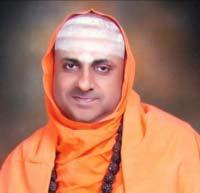
prominent universities across the world. By early this year, JSSAHER had a total number of 11,336 publications of which 5,327 publications were indexed in SCOPUS. The swift rise of the university in h-index has surprised the sector, but on close looks it becomes clear that it is the product of a superior vision to pursue multidisciplinary and transdisciplinary research, as well as the hard work by its scholars which led to publications in high impact journals that resulted in 100 such publications of JSSAHER achieving 100 citations each, which equates to an ‘h’ index of 100. With such concerted efforts in research, it is really no wonder that when the prestigious UK based Times Higher Education (THE) World University Rankings by Subject 2023 was announced last month, JSSAHER

SEASONAL MAGAZINE
His Holiness Jagadguru Sri Shivarathri Deshikendra Mahaswamiji, Chancellor
was the only Indian institution to feature under top 150 ranks in the subject ‘Clinical & Health’ with a rank band 126-150. Altogether there were 16 participating institutions under this subject in India. Signalling that it is benefitting much from its international tie-ups, JSSAHER moved ahead of its peer and longterm collaborator La Trobe University of Australia, this time. With this achievement in THE rankings, the university is starting to grab international eyeballs as it was ranked along with several leading



Universities in the world including University of Aberdeen, UK, University of Calgary, Canada, University of California, Davis, USA, University of Gothenburg, Sweden, University of Helsinki, Finland and University of Iowa, USA. And surprise of surprises, JSSAHER’s high citation score placed it equal on that count with none other than Dr. Surinder Singh, Vice Chancellor
Harvard University, which had secured third place in this ranking. The university’s 13th Convocation was a grand affair, where a total of 2,339 students received their degrees and diplomas in various faculties. While 65 of the graduates were awarded PhD degree, 25 others were awarded MPhil, six candidates were conferred with the Doctorate in Medicine and MCh degrees. Academic toppers were specially commended, with a total of 60 academic toppers being given a total of 83 medals and awards with certificates for their exceptional performances. The students who received the degrees this year came from various JSSAHER institutions including JSS Medical College, Mysuru, JSS Dental College and Hospital, Mysuru, JSS College of Pharmacy, Mysuru, JSS College of Pharmacy, Ooty, School of Life Sciences, Mysuru, School of Life Sciences, Ooty and School of Public Health, Mysuru.
Dr. B. Suresh, Pro Chancellor
SEASONAL MAGAZINE

ICFAI FOUNDATION FOR HIGHER EDUCATION


SEASONAL MAGAZINE PRIVATE UNIVERSITIES
From international tie-ups to poverty alleviation, and from business case studies to multidisciplinary research, IFHE is making its presence felt across higher education and research in business, engineering, architecture, law and social sciences.

SEASONAL MAGAZINE
Hyderabad based ICFAI Foundation for Higher Education (IFHE), a deemedto-be-university and the flagship of the ICFAI Group spread across India, is soaring higher and higher on the two things that matter most in higher education - academic standards and research achievements. The deemed university is also expanding judiciously by way of more departments. Recently, IFHE, which was until now more renowned for its constituents like ICFAI Business School, ICFAITech School, ICFAI Law School, and ICFAI School of Architecture, launched its School of Social Sciences. Hived off from its Department of Economics, the new ICFAI School of Social Sciences has 23 faculty members, all holding doctorate degrees in Economics, and would focus on teaching, practice, research and field action projects in the various social sciences. Noted economist and IFHE Chancellor Dr. Rangarajan, Vice Chancellor Dr. LS Ganesh, IBS Hyderabad’s Distinguished Professor Mahendra Dev and former VC and Advisor to ICFAI Group Prof. J Mahender Reddy were present on the occasion. The ICFAI School of Social Sciences would soon include disciplines like psychology, sociology and political science, and is likely to focus on emerging domains like sustainability, sustainable development goals,

circular economy, social innovation and startups, as well as improve upon IFHE’s already thriving multidisciplinary research initiatives. IFHE’s constituent schools also continue to forge meaningful tieups with global institutions of repute. The ICFAI School of Architecture (ISArch) recently entered into a Memorandum of

SEASONAL MAGAZINE
Prof. (Dr.) L. S. Ganesh Vice Chancellor
Understanding (MoU) with the renowned Boston Architectural College (BAC) of Massachusetts, USA. This tie-up will enable both institutions to collaborate and exchange academic and research activities, including Joint Educational Programs and Projects, Exchange of Faculty, Administrative Staff & Scholars, Exchange of Materials, Publications & Information, and Joint Organization of Seminars, Workshops, Studios & Conferences. At the same time, IFHE faculty and researchers are keenly

interested in projects for the upliftment of the economically challenged in India. A recent example was IFHE’s research collaboration with the International Rice Research Institute (IRRI). Jointly, they will be conducting a study in the neighbouring Odisha state to support inclusive, gender-responsive and climateresilient diversification of cropping systems and livelihoods in three districts that are suffering due to high poverty levels, vulnerability to droughts, and limited access to irrigation infrastructure. ICFAI Business School (IBS), on its part continues to win awards and accolades for its world-class MBA/PGPM program across all its 9 campuses. It has maintained its international benchmark status in business case studies since its inception. IBS Hyderabad is ranked 5th best in the entire South Zone and recognized as 25th in the list of top 100 private business schools in India in a survey conducted by the Ministry of Education through the National Institutional Ranking Framework (NIRF). IBS Dehradun is also ranked 1st in Uttarakhand, and 17th in North India among the best B-Schools.
 Dr. C. Rangarajan Chancellor
Dr. C. Rangarajan Chancellor
SEASONAL MAGAZINE
Prof. J. Mahender Reddy Advisor, IFHE
SATHYABAMA IS THE PLACE TO STUDY AI, ROBOTICS, BLOCKCHAIN, IOT & MORE
CHENNAI BASED DEEMED UNIVERSITY SATHYABAMA INSTITUTE OF SCIENCE & TECHNOLOGY IS FAST EMERGING AS ONE OF THE LEADING DESTINATIONS TO STUDY FUTURISTIC DOMAINS INCLUDING AI, ROBOTICS, BLOCKCHAIN, INTERNET OF THINGS ETC, AS WELL AS CURRENTLY BUZZING DOMAINS LIKE CLOUD COMPUTING AND SAAS VIA A TIE-UP WITH INDUSTRY LEADER SERVICENOW OF THE USA. SATHYABAMA HAS ALSO EMERGED AS A LEADER IN ACADEMICS WITH ITS BREADTH OF DOMAINS AND INNOVATIVE PEDAGOGY, AND AS A LEADER IN FUNDED RESEARCH PROJECTS AND STARTUP INCUBATION. FOUNDED BY THE MULTIFACETED LEADER AND ENTREPRENEUR HON.COL.DR. JEPPIAAR, AS ITS FOUNDER CHANCELLOR, THE INSTITUTION HAS SCALED GREATER HEIGHTS AS A HIGHEST GRADE INSTITUTION WITH NAAC A++ ACCREDITATION, UNDER THE DYNAMIC LEADERSHIP OF DR.MARIAZEENA JOHNSON AS CHANCELLOR AND DR.MARIE JOHNSON AS PRESIDENT.

SEASONAL MAGAZINE PRIVATE UNIVERSITIES

SEASONAL MAGAZINE
ver since ChatGPT burst into the scene last November, this giant initiative in Artificial Intelligence (AI) has been transforming sectors including education. While there are great concerns about ChatGPT’s potential to corrupt students by way of delivering complete answers for challenges in essay writing, maths problem solving and software coding, it also holds great opportunities in creating a new breed of jobs.

For instance, prompt engineering is fast emerging as a domain that can employ thousands of skilled engineers, and it involves training the Generative AI or Large Language Models (LLM) like ChatGPT with systematic sets of questions, data and follow up questions. And with Generative AI moving past text-based solutions like ChatGPT into image generators like DALL-E and video generators, prompt engineering is going to be a hot field to be in, in the years to come.
But for students considering such futuristic domains, it is always a



SEASONAL MAGAZINE
question as to which university to go for while pursuing such subjects. Chennai based deemed university Sathyabama Institute of Science & Technology is fast emerging as one of the leading destinations to study all such tech-related domains including Artificial Intelligence, Machine Learning, Robotics, Blockchain / Crypto, Internet of Things (IoT), Data Science, Cyber Security and more. And future watchers are predicting that there will be several new opportunities to emerge in these

domains as their adoption becomes fast paced. For example, prompt injection is a malicious strategy to manipulate LLMs like ChatGPT to produce realistic fake news and fake profiles and hence cyber security experts are also expected to be in high demand, provided they upgrade their skills to combat these new challenges. While Sathyabama has heavily invested in these futuristic domains, it has also set its eyes firmly on the current trends in IT and IT enabled services, which is mainly revolving around cloud computing and Software as a Service (SaaS) domains. The majority of jobs in the technology sector are expected to be in these sectors in the immediate future, and to tap this effectively for their students, Sathyabama, under the visionary leadership of its Chancellor Dr. Mariazeena Johnson, has tied up with a world leader in this segment, the USA based and NYSE listed tech major ServiceNow.
ServiceNow has developed an innovative cloud computing platform to help companies manage digital workflows for enterprise operations. Ranked number one by Forbes in its list of the world’s most innovative companies, the Santa Clara, California based ServiceNow is witnessing rapid adoption by large corporations across the world and
is today seen as a top competitor for Microsoft, SAP, SalesForce and other leaders in this space.

Under its recent tie-up with ServiceNow’s RiseUp program, Sathyabama has integrated their modules like ServiceNow Advanced Fundamentals, IT Service Management, Scripting and Application Development etc into the curriculum so that text-book knowledge is merged with practical applications right while the students are in the university, making them uniquely industry ready to take up high paying jobs in the digital enterprise workplace as soon as they pass out.

With such initiatives, Sathyabama Institute of Science and Technology (Deemed to be University) has emerged as one of India's premier Academic and Research universities that offers multi-disciplinary academic programmes in various fields of Engineering, Science, Technology, Architecture, Law, Pharmacy, Dental, Nursing, Management, Arts, Science , Physiotherapy, Allied health sciences and Hotel Management.

The institution was established in 1987 by multifaceted leader and entrepreneur Hon.Col.Dr. Jeppiaar, as its Founder Chancellor. It was established under Sec.3 of UGC Act, 1956 and is accredited with “A++” the Highest Grade by National
 Dr. MARIAZEENA JOHNSON, Chancellor
Dr. MARIE JOHNSON, President
Dr. MARIAZEENA JOHNSON, Chancellor
Dr. MARIE JOHNSON, President
SEASONAL MAGAZINE
Assessment and Accreditation Council (NAAC) and is also recognized by AICTE.
Sathyabama reached greater heights under the dynamic leadership of Dr.Mariazeena Johnson as Chancellor and Dr.Marie Johnson as President. They are assisted in the daunting task of administration by Vice Presidents ArulSelvan, Maria Bernadette Tamilarasi, Maria Catherine Jayapriya, and a team of outstanding faculty, who follows innovative pedagogical practices backed by state-of-the-art academic and research facilities.
Sathyabama’s stands tall in ratings and rankings at both the national and international level. The Institution has been ranked one among the top 50 Universities for the last seven consecutive years in NIRF ranking by India’s Ministry of Education, which is an impressive feat achieved only by the most excellent higher education institutions in the country. This deemed university today offers 49 Undergraduate Programmes, 25 Postgraduate programmes and Ph.D programmes in all major disciplines.
Sathyabama is also a leading hub for Research, Technology Incubation and Product innovation in Science and Technology. There are 40+ technical and non-technical clubs contributing to students’ overall and co-curricular development under Student
Development Cell of the institution.
The Sathyabama Centre for Advanced Studies is one of its kind among peers and delivers the unique synergy between the academic and research fields. This state-of-the-art establishment is in an impressive area of 60,000 sq.ft within a total built up space of 2,40,000 sq.ft, having 360 feet facade with two courtyards, with one representing the academic block and the other the advanced research facility.
Over the years, Sathyabama has become a high ranking destination by offering world class academic and research ambience, and has succeeded in attracting students from different parts of the globe.The International Research Centre and Col.Dr.Jeppiaar Research Park housing the advanced research facilities, have globally recognized research and scientific talent. There are 15 centres of excellence in research, which are working in close coordination with these impressive research facilities.
Reflecting the quality and quantity of the research in the campus are 10+ Technology Transfers, 100+ patents and 19000+ reputed publications. The institute also has 228 funded projects, 50 + startups and 11 NBA accredited programmes. Sathyabama also has QS World University Ranking between
1001 – 1200 and Times Impact Ranking between 601 – 800.
Sathyabama has signed more than 250 MoUs for research collaborations, faculty and student exchange, and internship programs, with international universities and industries. This includes collaborations with 51 international and 25 national institutions. The institution distinguished itself in receiving grants from the major research funding initiatives by MHRD including SPARC, SPARSH & IMPRESS programs, NPDF, RTF, DST-OVDF, ICMR-RA and CSIRSRF, besides Korean research fellowship, for various projects.
Also to its credit is the first successful Student Satellite ‘SATHYABAMASAT’ which was designed and developed by the staff & students of Sathyabama, and launched in 2016 by ISRO. The team behind this had an interaction with the honourable Prime Minister Narendra Modi who was highly appreciative of this achievement.
Sathyabama’s placement record has been consistent with around 93% of placements every year, with 300+ companies involved in the recruitment process that includes dream companies and super dream companies’ providing lucrative offers to the students. In the current year the placements have crossed 2900 offers and are still going on.


 MARIA BERNADETTE TAMILARASI, Vice President
J. ARUL SELVAN Vice President
MARIA CATHERINE JAYAPRIYA Vice President
SEASONAL MAGAZINE
MARIA BERNADETTE TAMILARASI, Vice President
J. ARUL SELVAN Vice President
MARIA CATHERINE JAYAPRIYA Vice President
SEASONAL MAGAZINE
A PSYCHOLOGIST SHARES THE HABITS OF HAPPY PEOPLE
WHAT MAKES YOU HAPPY? MAYBE IT’S GETTING UP EARLY TO SEE THE SUNRISE, HANGING OUT WITH FAMILY AND FRIENDS ON A WEEKEND, OR GOING FOR A DIP IN THE SEA. BUT WHAT DOES SCIENCE SAY ABOUT THE THINGS HAPPY PEOPLE DO?
e know that happy people tend to have strong relationships, good physical health and contribute regularly to their communities. I have experimented over the past seven years with a number of happiness and wellbeing interventions in a bid to improve my own mental health and to understand how to best help others. Some strategies have stuck while others haven’t worked for me. But here’s what I’ve learnt along the way.
The reality is that there’ll be times we manage to engage with happiness habits and feel positive. Then there’ll be occasions when life throws a curve ball and our happiness is affected. But the good news is that we can all improve our levels of happiness with daily practice.
1. MOVE YOUR BODY
My body needs to move regularly throughout the day. Sitting for long periods of time does not make my body or mind happy. At the very least I will walk briskly for an hour every day. I also like to swim, dance and do yoga. Regular physical activity and exercise are high on the list for happiness as studies consistently demonstrate a link between being physically active and increased subjective wellbeing, aka happiness. Research shows that walking for 30 minutes a day can improve your health. But studies on happiness show that people benefit more when they engage in moderate and highintensity exercise, which increases the heart rate. Moderate exercise is anything that makes you slightly out of breath – you can still talk but probably couldn’t sing a song. Prioritise exercise, your body (and brain) will thank you for it.
2. PRIORITISE CONNECTION
The most recent happiness research shows that our social connections are important in terms of overall wellbeing and life satisfaction. Indeed, making time to talk, listen, share and have fun with friends and family is a habit I try to prioritise. But a recent study has found that we generally engage more with friends and family when we feel unhappy and less so when we are happy. This may be because we naturally seek out comfort and support to feel happier and pursue other activities when our happiness is stable. It seems to come down to a question of balance, too much time alone can lead to negative emotions and so seeking out others is a natural way to alleviate this and boost our mood. On the flip side when we feel positive and happier we are more inclined to support others and provide a shoulder to cry on. Nonetheless spending time in the company of friends and family provides both short-term and long-term happiness gains. Look after your friendships and they’ll look after you.
3. PRACTICE GRATITUDE
Our outlook on life and how we evaluate things also plays a huge part in our happiness levels. Studies have found that having a more optimistic mindset and practising a sense of gratitude can buffer against negative emotions and increase happiness. Practising daily gratitude, such as counting my blessings or listing things throughout the day I am grateful for, helps me think more positively and feel happier. You can do this in a number of ways, for example, a daily gratitude journal, which can be handwritten or kept on your phone. The three good things intervention is a quick
and easy habit to adopt for increasing optimism. You simply write down three things that went well every day and reflect on what was good about these. There are many apps now that can prompt you and keep track of your gratitude. Other apps allow you to create vision boards and positive affirmations for your days. Although some may seem gimmicky it’s all about that gentle nudging towards positivity, which the science supports. Or in other words, practising and cultivating an attitude of gratitude and appreciation generally works, and helps you to feel more positive about your life. Gratitude also helps you to see the bigger picture and become more resilient in the face of adversity. You can also practice gratitude more naturally by giving thanks – telling someone what you are grateful for that day or sending thank-you messages. Indeed, it might sound trite but this is important as research shows daily feelings of gratitude are associated with higher levels of positive emotions and better social wellbeing. So give thanks, it might just lead to a happier life.
4. SPENDING TIME WITH PETS HELPS TOO
My pets are part and parcel of our family routine and also support me in my daily happiness. I find going for walks easier to do because of my dogs. Research shows that dogs motivate their human companions to be more active and in turn, both dog and human have a shared pleasurable experience that boosts their happiness. I also enjoy sitting with my cats while drinking tea and reading a book. Studies have found that family pets provide many benefits towards health and happiness, as they not only provide companionship but also reduce incidents of depression and anxiety while helping to boost our happiness and self-esteem levels.
The main ingredients for happiness and what the research boils down to are social connections and activity – of both the mind and body. And finding a flow to life through our daily habits and intentions can lead to happier, more fulfilling lives.
(By Lowri Dowthwaite-Walsh, Senior Lecturer in Psychological Interventions, University of Central Lancashire)

SEASONAL MAGAZINE MIND
KARUNYA’S SOLUTIONS FOR GLOBAL WELLBEING

SEASONAL MAGAZINE PRIVATE UNIVERSITIES
Coimbatore based deemed-to-be university, Karunya Institute of Technology & Sciences (KITS) is fast emerging as a powerhouse in both academics and research with the highest NAAC A++ accreditation, and with funded projects worth Rs 25 crore, more than 100 patent applications, 14 granted patents, and 6300 papers in Scopus and WoS indexed journals.

SEASONAL MAGAZINE
Imagine Artificial Intelligence based traffic control. Or imagine waste collecting robots. Or hybrid rocket motors. Or smart bio polymers, or nanoparticles for meat preservation. These are all cutting-edge products and solutions from various technology domains that not even the most innovative company in the world may not be able to create on its own. Yet, students of a deemed-to-be university in India, the Tamil Nadu based Karunya Institute of Technology & Sciences (KITS), could recently organise a twoday national level event - Mindkraft 23 - that witnessed all these state-of-the-art products and solutions, with the event serving as a perfect launchpad for such brilliant and innovative ideas of budding technologists from all over the nation. Around 150 teams participated in this flagship event of Karunya Deemed University which also saw 90 technical events. The brainchild of noted educationist and Karunya Chancellor Dr. Paul Dhinakaran, the brilliance of Mindkraft 23 was really in the fact that it was the Karunya students who organised the entire event. Obviously, students learn best when they do things for themselves. They were supported by the university’s various departments including the high-tech departments of Aerospace Engineering, Robotics & Automation, Nano Science, and other such faculties. Mindkraft 23 provided a platform for students to explore, collaborate, and find innovative solutions to complex challenges aligned with the 17 Sustainable Development
Goals (SDGs) established by the United Nations and the four key research domains of Karunya viz. food, water, energy, and health. Earlier, Karunya Deemed University’s students had won the prestigious Intel Unnati Grand Challenge. A team of students from Karunya’s Department of Computer Science and Engineering, had developed a decision support system for traffic control using state-of-the-art technology. Interestingly, this was possible due to the university facilitating an Intel Unnati Lab at Karunya campus, whose Upsquare Extreme Edge Computing device was used to build a prototype of this decision support system. Coimbatore based Karunya has also been awarded with the highest NAAC A++ grade. The university had excelled in the NAAC assessment of its laboratories, infrastructure, funded


projects, patents and research papers. KITS has been following an Industry 4.0 compliant curriculum as well as digital teaching and learning practices using state of the art infrastructure. It is emerging as a powerhouse in research with funded projects worth Rs 25 crore, more than 100 patent applications, 14 granted patents, and 6300 papers in Scopus and WoS indexed journals. One of the leaders in startup incubation and entrepreneurship, Karunya has a Section 8 company dedicated to incubation and entrepreneurship. Karunya is also home to 25 technology missions in some of the most pressing areas of concern, and it has unique facilities like a laboratory sponsored by the Ministry of Food Processing Industries and a laboratory supported by the Nano Mission. Its Aerospace Engineering laboratory boasts of supersonic and subsonic wind tunnels and it also has several industry partnered laboratories with tech majors like Siemens, IBM, Cisco, Nvidia, Suez, AMZ Automotive and Tessolve, which make the Karunya students industry ready by the time they graduate.

SEASONAL MAGAZINE

SOLUTIONS TO NATIONAL CHALLENGES THROUGH RESEARCH & ACADEMICS

SRMIST, the flagship of SRM Group of Universities, led by its Founder & Chancellor and sitting Lok Sabha MP Dr. TR Paarivendhar, is emerging as a powerhouse in research. In the past 3 years alone, this deemed university near Chennai has published 4,100 collaborative papers. Also, in the past 5 years, SRMIST research scholars have published 45 papers in the prestigious ‘Nature’ indexed journals. And over the past 10 years, various SRMIST research projects have received Rs. 200 crore in funding, mainly from various government owned scientific & research bodies.

rof. (Dr.) Krishna N Ganesh may not be a household name in India, but he is one of the most renowned scientists in India, whom his peers and industry look upon for vision and insights. His exemplary work in bio-organic chemistry, especially about DNA structures and its potential roles in different domains, landed him the prestigious Shanti Swarup Bhatnagar Prize in Chemical Sciences in 1998, and Padma Shri this year. Prof. Dr. Krishna recently had an interesting take on the alternative sources of energy. He sort of denounced one of the greatest initiatives in alternative energy - solar power - and declared that the future of the world is to be a hydrogen economy.

OF UNIVERSITIES
SRM GROUP
SEASONAL MAGAZINE PRIVATE UNIVERSITIES
Dr. TR Paarivendhar Founder & Chancellor



While he is not the first person to say this, when it comes from this eminent scientist and the Director of the Indian Institute of Science Education and Research, with detailed logic to back his stand, the whole of India took notice. This was also because of the stage from which Prof. (Dr.) Krishna was speaking from - the Inaugural Address at the 4th Dr. Paarivendhar Research Colloquium (DPRC) 2023 at SRM Institute of Science and Technology (SRMIST), at Kattankulathur, near
Chennai. The Guest of Honour at the event was Dr. R.Sankaranarayanan, Outstanding Scientist, Centre for Cellular and Molecular Biology of the Council of Scientific and Industrial Research. Prof. (Dr.) Krishna also had other innovations to educate this elite audience. He called upon their attention to the recent fires at the massive garbage dump yards in New Delhi and Kochi, and informed that solid waste management can be possible by developing new technologies and materials to conduct reactions and processes at room temperatures, thereby reducing the rising costs of energy and faster implementation of such projects. But he cautioned that such projects would require interdisciplinary research that starts in classrooms, and appreciated the work that private & deemed universities in India like SRMIST, which were established by visionaries, were undertaking to the cause of science education and research. Indeed, Dr. TR Paarivendhar, the Founder & Chancellor of SRMIST is a multifaceted leader, visionary & educationalist who is also the sitting Member of Parliament in the 17th Lok Sabha of India from Perambalur constituency in Tamil Nadu. What Prof. (Dr.) Krishna said about SRMIST’s achievements in research are also facts, though little known, as in the past 3 years alone, SRMIST has published 4,100 collaborative papers. Also, in the past
5 years, SRMIST research scholars have published 45 papers in the prestigious ‘Nature’ indexed journals. And over the past 10 years, various SRMIST research projects have received Rs. 200 crore in funding, mainly from various government owned scientific & research bodies. The world is also taking note of such achievements, with a recent example being the La Trobe University in Australia signing a Memorandum of Understanding with SRMIST to establish a Joint Centre of Eminence. High level interactions with topmost scientists of the country and abroad have now become second nature for SRM Group of Universities. The Group’s younger university, SRM University of Andhra Pradesh, recently had such an interaction when its Pro Vice Chancellor Prof. D Narayana Rao and faculty interacted with Prof. CNR Rao, a world-renowned scientist and recipient of the Bharat Ratna, at Jawaharlal Nehru Centre for Advanced Scientific Research (JNCASR) in Bengaluru. The meeting facilitated an extensive discussion on SRM-AP’s ongoing and future research projects. Prof. CNR Rao appreciated SRM-AP’s progress in research over the past five years and provided suggestions to effectively align the university’s research activities with the emerging national missions that contribute to the country’s development. SRM-AP had recently been adjudged as the Best Emerging University with Academic Excellence in India at the 13th Asia Education Summit & Awards 2023 held in New Delhi, with the award handed over to the University by Union Minister of State for Education and External Affairs Dr Raj Kumar Ranjan Singh along with former Union Minister for Education Ramesh Pokhriyal Nishank, for SRM-AP’s outstanding services and contribution to the higher education sector. SRM students also continue to shine on, in not only academics, but extracurricular activities like sports, with a recent example being both its boys and girls teams winning the top spot in All India Inter University Chess Championships, with perfect 10/10 scores, the only university to achieve this feat.
SEASONAL MAGAZINE
Ravi Pachamoothoo Pro-Chancellor, SRMIST
Dr. P. Sathyanarayanan President SRM-AP
THE BIG STORE CON AND AI: COMING TO A CAMPUS NEAR YOU THE BIG STORE CON AND AI: COMING TO A CAMPUS NEAR YOU
Renowned educationist, consultant and entrepreneur Dr. Madhukar G. Angur, Founder Chancellor of Alliance University, Bangalore, and Dr. Jack Helmuth, Professor of Finance at the University of Michigan, write about how online education assisted by artificial intelligence based tools can become much like a ‘big store con’ worldwide, using illustrations from both the USA and India, and how students can detect and guard against it. Dr. Angur holds a Ph.D. from the University of Texas, Arlington, USA; a Post Graduate Diploma in Management (PGDM) from the Indian Institute of Management, Ahmedabad, India, and a Bachelor of Technology degree in Electrical Engineering from the National Institute of Technology, Surathkal, India. Dr. Angur is the recipient of many awards and accolades including the David M. French Distinguished Professorship - a Lifetime Achievement Award from the Flint campus of the University of Michigan.

The Big Store refers to one of the classic long con confidence games. The con establishes a store, whether it be an investment brokerage, insurance agency, or even a bank. Perhaps it sounds familiar. In the movie “The Sting,” a fake racetrack-betting parlor served as the store. The Big Store was integral in Robert Stone’s novel A Hall of Mirrors, which was later made into a Paul Newman movie (Newman also starred in The Sting) called WUSA. Legendary long cons exist in the past as well as today; just recently, a big store, a fake bank, ran for an entire year in China.
There is a pervasive dichotomy evolving in American higher education. On the one hand, we have the traditional brickand-mortar, students-in-the-seats experience. Football, beer, Greek life, and going to a classroom for lectures or labs are long-established traditions. In-class exams, eye contact with your peers and professor, and most importantly, co-curricular and extra-curricular experiences are enormously important for a student’s education and development. The traditional campus will survive indefinitely. There will always be a market for the ivy towers.
SEASONAL MAGAZINE PRIVATE
UNIVERSITIES
Dr. Madhukar G. Angur
On the other hand, there is online education, where a student can receive an entire degree remotely without ever stepping foot on campus. Highly recognizable universities provide such degrees, along with their traditional campus programs. There are also online degree programs that have little or no physical campus structure. In either case, can the quality, experience, and final product of an online education be equivalent to the traditional education? Most emphatically - NO.
Enter the prospect of Artificial Intelligence (AI) in education. AI can potentially bridge the gap between traditional and online education by providing personalized learning experiences, automating administrative tasks, and offering virtual tutoring. While AI cannot replace the value of in-person interactions, it can enhance online education and make it more competitive with the traditional campus experience.
Even though they are often priced identically, marketed to leave an impression that the degree is equally recognized, and even using the same identical instructors, the results of the two differ. The traditional campus, with all the incremental experiences, provides a far superior education. A sizeable majority of professors will agree with that assessment. This is despite dedicated faculty that are creatively employing the most current online technology, methodologies, and AIbased tools.
The push to legitimize, sans caveat emptor, online degrees is a classic big store brought about by circumstance. Many traditional campuses are faced with declining enrollment because of demographics. There are real budgetary crises, especially if you must keep fulltime faculty employed and the research wheels greased. Picture the empty hallways, empty classrooms, and empty coffers, all the ingredients that necessitate the big store revenue. Please note, our comments are not about the emergency Covid-19 education measure taken these past few years
and likely to repeat itself if another wave of something like Covid-19 comes through. We are discussing the persistence of online degree education and the incorporation of AI to enhance the experience.

The irony of the big store con is that the target often does not know that they are conned. There will likely be sizeable income and societal differences between the two groups, and the online student may not recognize that they are being paid systematically less, advance more slowly in their careers, and generally not appreciable of the benefits of a broad education. Will there be exceptions? Of course, yes. However, eventually, the market segments, in terms of long-term earnings and success, will appear. Perhaps the online statistical underperformance will be masked by the complexity of the data and the con will not be fully detected. Or perhaps it will be when repaying student debt with less income capacity.
In either case, the perpetrators, as with any successful con, will have moved on undetected. Retirement programs are lucrative safe havens for them. The tragedy is that the target of the long con will be unaware of the consequences of matriculating in online degree programs, even with the integration of AI.
Any big store con must have a cast of players to populate the store. First up are the university administrators. Budgetary issues have driven them, with the allure of easy online money and the promise

of AI-enhanced learning, to play the con. Of course, students will be happy with these courses; they grew up in the electronic information age. Administrators have a variety of sanctimonious rationales for these programs that no one seems to challenge. For instance, they like to claim that there is more student diversity, especially geographic, with distant learning. Realize that in the USA most state schools have an in-state and higher out-of-state tuition schedule that impedes such diversity in traditional programs. How clever! And the state tuition represents a regressive tax, where the poor are paying state taxes to help finance tuition for higher income groups that are disproportionately attending school. No one wants to upset that scheme.
Another player is the federally sanctioned accreditation agencies. There are regional accreditation agencies that evaluate the entire university and accreditation for programs, like nursing or business. People generally do not know that the accreditation process and reaccreditation reviews are peerconducted by administrators and faculty from other universities. One of the unsung reasons for their existence is that they provide (minimum) assurance of quality. Their regulatory oversight helps to negate state officials or university boards from delving too deeply into questions of quality or relevance. Admittedly, they have been active in raising questions and
SEASONAL MAGAZINE
providing standards regarding online learning and the integration of AI. However, just a few decades ago, a main campus might have accreditation issues if they started an off-campus site on a military facility a few hours away, with quality classrooms and instructors, but no library facility. Now, anything goes with distance learning and AIenhanced education.
Politicians have been very adept at using voters’ concerns regarding the high cost of college education. Popular plans such as free tuition or student debt forgiveness are bandied about with gusto. Politicians with an even more populist bent are vocal concerning online education and demanding that AI technology should lower the cost of education. How will this play out? Balancing the budgetary realities with the popularity of state universities will require a political balancing act that will have the players in the big store scrambling for détente.
The students themselves, the target of the con (the mark), are players too. Many students have little choice but to opt for online programs because of a variety of circumstances. Even if they realize the program is second best, they must choose online. However, there is also a large portion that selects online simply for convenience. Some are merely interested in picking up a diploma (wall art). It is not uncommon for a student to select online classes even when they are living in hostels/dorms. Like a doubleedged sword, the internet provides opportunities to outsource homework and term papers at reasonable prices.

Ultimately, do these students realize that the online experience, even with the support of the most sophisticated AI, does not provide the same experience and results as the traditional program? Has anyone informed them of these costs? Perhaps the online advisor when they register online for the first time? The dean or the department chair? Is it commonly discussed in the media, providing not so much a warning, but simply information? Can incoming students, often first-generation college students, and their parents be that naïve? Apparently. After all, look at the massive
student debt and, in many cases, the inability, even with a college degree(s), to pay off the debt. If they can make those bad decisions, they are equally capable of naively grasping the online degree program and assuming it provides the same ultimate benefits of the traditional degree, even with the incorporation of AI. As we know with any long con, the mark may never know they were conned. As decades roll by, this will create a segment of society that will be disillusioned by never achieving their dreams or their full potential. They have the best intentions. To paraphrase the legendary conman Joseph ‘Yellow Kid’ Weil, he never conned someone who did not want to be conned. This online education big store, even with AI’s potential to enhance learning, will leave a significant portion of their generation a lost generation, and no one will know what happened.
India has been inundated with Education Technology (EdTech) platforms which mushroomed over the past decade and grew in size particularly during the pandemic. However, the teaching and learning that supposedly occurred during the hay days are still questionable. Distributed learning and/ or blended learning methodologies are being experimented in various institutions of higher learning with mixed results.
No matter how sophisticated AI gets with any degree of AI enabled integration occurring in distance or distributed learning, it would not be able to completely replace face-to-face learning. Yes, AI will make a select group of jobs obsolete but new skills and enhanced adaptive skill development would evolve and universities and institution of higher learning must always be cognizant of this both in terms of knowledge creation and knowledge dissemination.
While AI has the potential to improve online education and bridge the gap between traditional and online learning experiences, it is essential to recognize that it cannot replace the value of inperson interactions and the overall campus experience. As higher education continues to evolve, it is crucial for universities, administrators, and students to be aware of the differences between online and traditional education and make informed decisions about their academic pursuits. The integration of AI in education should be approached with caution and a realistic understanding of its limitations, ensuring that the technology serves as an enhancement rather than a replacement for a well-rounded education.
(The views expressed in this article are solely of the author.)
SEASONAL MAGAZINE

SOA’S EDGE IN PLACEMENTS AND STARTUP INCUBATION
SOA’S EDGE IN PLACEMENTS AND STARTUP INCUBATION

SEASONAL MAGAZINE PRIVATE UNIVERSITIES
THE ODISHA BASED SOA DEEMED-TO-BE-UNIVERSITY HAS BEEN EXCELLING IN PLACEMENTS YEAR AFTER YEAR, MOVING UP THE RUNGS BY WAY OF BOTH QUANTITY AND QUALITY OF JOB OFFERS FROM LEADING CORPORATES, AS WELL AS ACHIEVING BIG IN INCUBATING ADMIRABLE STUDENT STARTUPS.

SEASONAL MAGAZINE
magine students impressing dignitaries like Dharmendra Pradhan, India’s Minister for Education, Subhas Sarkar, Minister of State for Education, and Rajeev Chandrasekhar, Minister of State for Skill Development & Entrepreneurship, with their startup projects. That is what four student groups of Odisha’s Siksha ‘O’ Anusandhan (SOA) deemed-to-be university achieved recently. These teams belonging to SOA’s faculty of engineering, the Institute of Technical Education and Research (ITER), had created four startups - Wedmist Technology, Twinverse Technology, Let’s Drive & Extrava Study Tours - that won the appreciation of Education Minister Dharmendra Pradhan. The event was an elite one, the recent sixday Future of Work Exhibition held on the sidelines of the G20 Education Working Group meeting which was held at the CSIR Institute of Minerals and Materials Technology in Bhubaneswar. The first startup Wedmist Technology’s flagship product serves hyper-local service providers through Artificial Intelligence

(AI) while Twinverse Technology focuses on diverse areas including archaeology, tourism etc that are among Odisha’s strengths as well as in novel product designing. The third startup Let’s Drive is working on creating unique employment opportunities in the use of electric vehicles, while the fourth one Extrava Study Tours focuses on enhancing the workplace skills of people seeking




employment using innovative means. Apart from the Union Ministers, other top dignitaries who visited the SOA startups stall included Prof TG Sitharam, Chairman of AICTE, K Sanjaya Murthy, Secretary, Higher Education in the Ministry of Education, Prof Anil Sahasrabudhe, Chairman, EC, NAAC and Dr Nirmaljeet Singh Kalsi, Chairman, National Council for Vocational Education and Training. While student startups are inspiring for all, they directly empower and enable only a fewer number of students, and SOA has bigger initiatives that enable
 Prof. Pradipta Kumar Nanda. Vice Chancellor
Prof. Pradipta Kumar Nanda. Vice Chancellor
SEASONAL MAGAZINE
almost all of its 15,000 strong student community. One such recent event was an industrial interactive workshop conducted by SOA in Bhubaneswar on the topic ‘Recent Developments and Challenges in Core Industries’. The workshop focused on subjects like emerging areas of renewable energy, future challenges of work, workforce and workplace in manufacturing industries, challenges which obstruct the improvement of core industries, and opportunities for smart manufacturing and application of data science, Artificial Intelligence (AI) and Machine Learning (ML) in Industries. The workshop was organised by the Department of
Mechanical Engineering of the SOA’s Institute of Technical Education and Research (ITER), and featured industry experts from Brahmani River Pellets Ltd, CTTC, Sunstone Solar Solutions, Sree Metaliks, and GMR Power Plant as the resource persons who discussed the dynamically changing career prospects of engineering students. The experts detailed the need for preparing graduates in the field of science and technology by inculcating various emerging skill sets required by the industry. With such empowering programs it is no wonder really that SOA has not only ended the need for Odisha based students to go outside the state for higher education, but is also attracting students from all over India and some pockets of the world. This deemed university has been excelling in placements year after year, moving up the rungs by way of both quantity and quality of job offers from leading corporates. SOA is accredited by NAAC with ‘A++’ grade and is in its 3rd cycle, and is ranked Internationally by QS and THE World University Rankings. In MHRD’s NIRF India Rankings 2022, it is 16th in the University Category, 27th in the
Engineering Category, 18th in the Medical Category, 10th in the Dental Category, 9th in the Law Category and 45th in the Research Category. SOA has also been granted the Category-I Graded Autonomy Status by UGC, Government of India. The sprawling SOA campus in the capital city of Odisha is ranked 3rd nationally for being most clean under the Government’s Swachh Campus initiative. The brainchild of Prof. (Dr.) Manojranjan Nayak, who serves as the President of SOA, this deemed university follows national and international standards in pedagogy and the quality of its teaching learning systems and processes. For instance, SOA follows the Outcome Based Education (OBE) framework and has several NBA and ICAR accredited programs. SOA is also home to the NABH accredited SUM Hospital and an NABL accredited Diagnostics Laboratory. SOA is professionally led by a team of academicians led by Prof. (Dr) Amit Banerjee as Pro Chancellor; Prof. (Dr.) Pradipta Kumar Nanda as Vice Chancellor; Prof. (Dr.) Bibhuti Bhusan Pradhan as Pro ViceChancellor; and Prof. (Dr.) Sitikantha Mishra also as Pro Vice-Chancellor.


 Prof. Amit Banerjee - Pro-Chancellor
Prof. Amit Banerjee - Pro-Chancellor
SEASONAL MAGAZINE
HOW GALGOTIAS UNIVERSITY IS GROOMING EXCEPTIONAL ACHIEVERS

What have the StockPe co-founder Shubham Rawal, E&Y Partner Dr. Avantika Tomar and Aaj Tak Anchor Shubhankar Mishra have in common? Many things may be, as they are all young high achievers, but mainly they are all alumni of Galgotias Group of Institutions. Having placed over 1 lakh students so far, including in some of the world’s most prestigious companies including Microsoft, Google & Mercedes Benz, Galgotias University is now extending its stellar placement record to its School of Liberal Education too. Under the visionary leadership of its young and dynamic CEO Dhruv Galgotia, the Group is also a powerhouse in startup incubation, with Galgotias campuses having spawned over 100 startups.

You must have heard about students founding their own startups. But have you ever heard about a student not only founding his startup but returning to his campus to found a full-fledged startup incubator that has progressed to over 800 members and acted as a catalyst for over 100+ campus startups?
That is the inspiring story of young entrepreneur Shubham Rawal, cofounder of noted startup StockPe, and the entrepreneurship cell at Galgotias University. And wonder of wonders, he did all the background work, while he was caring for his ailing father who was undergoing dialysis at various hospitals.
The inspiring story of Shubham Rawal has a heartrending milestone that will bring tears to your eyes - of his father
SEASONAL MAGAZINE PRIVATE UNIVERSITIES
passing away after a prolonged fight with kidney disease, and Shubham bagging his first round of funding the next day. The young entrepreneur credits his father for initiating him into coding and computers, and the CEO of Galgotias Group Dhruv Galgotia for providing him direction and all support as an entrepreneur.

Shubham’s high achievement is by no means an isolated incident. Dr. Avantika Tomar is a partner at Ernst & Young’s educational consulting division, Parthenon, where she advises governments, universities, corporates and other stakeholders on strategy and consulting. Earlier, she had worked with the Boston Consulting Group, and also with two leading corporates in Australia for around 5 years.
Dr. Avantika recently visited her alma mater, the Galgotias Group, home to Galgotias University (GU) and Galgotias College of Engineering and Technology (GCET) from where she had passed out as a BTech Mechanical Engineering graduate in 2006. Ace corporate leaders like Dr. Avantika symbolises the maturity Galgotias has achieved in higher education. Despite having seen the world, and being a high achiever in her young age - she is also a PhD holder from IIM Calcutta - Dr. Avantika was all praise for the rapid strides the Galgotias Group of Institutions had taken in the recent decades. She was especially appreciative of the entreprenurial culture which has incubated over hundreds of entreprenurial ventures with over one hundred of them progressing to be well defined startups.
She remembered with gratitude the support of Galgotias management and faculty and exhorted the current students to look beyond marks, and utilize the sprawling infrastructure and facilities at the Galgotias campuses to their full advantage.
Greater Noida based Galgotias University has swiftly emerged as a leader in the world of quality education by delivering consistently excellent results across academics, research and placements. Galgotias is inspired to carry forward the vision of Hon. PM Shri Narendra Modi Ji of making India a Vishwaguru and the dream of Hon. UP CM Shri Yogi AdityaNath Ji of making Uttar Pradesh a truly Global Knowledge Superpower.
It has recently achieved NAAC A+ accreditation with a high score that makes it the second highest among all state private universities in the country. In the NIRF 2022 Rankings too, Galgotias has achieved excellent ranks

across several domains, including engineering, management and pharmacy. In the OBE Rankings 2022, the university is placed in the Platinum Band with Grade A++. Galgotias’ MBA and BPharm programs are also NBA accredited for adhering to world class standards.
When it comes to innovation too, the university has been top ranked, having been placed in the Excellent band under the Union Government’s ARIIA framework. And Galgotias University shot into national limelight when it received 3,99,373 applications under the newly introduced CUET exam, thereby becoming one among the topmost 8 preferred universities in the country for admissions.
For the academic year 2022-23, the university’s admissions are now open for several career focused UG/PG/PhD degrees across almost every domain including engineering, computer science, business, pharmacy, nursing,
SEASONAL MAGAZINE
Dhruv Galgotia
medical & allied sciences, law, hospitality & tourism, agriculture, media & communication studies, liberal education, basic & applied sciences, finance & commerce, and more. Under the dynamic leadership of its CEO Dhruv Galgotia, the young university has succeeded in attracting exceptional faculty, forged tie-ups with MNC majors like Infosys, Cognizant & Wipro for the benefit of students, and is also planning a major foray into the healthcare and hospitals sector.
Galgotias University has recently emerged as a national leader in higher education by bagging the highest benchmark in academic excellenceNAAC A+ accreditation - in its first accreditation cycle itself. With a NAAC Score of 3.37 out of 4, Galgotias has also become the only private university in Uttar Pradesh with such a high score, and the second highest among all state private universities in the country.
In the NIRF 2022 Rankings, Galgotias had attained 59th Rank in Pharmacy, 93rd Rank in Management and 147th Rank in Engineering.
With over 96% placements including in some of the world’s largest firms, during the last five years, including the most troubling pandemic years, the Greater Noida based Galgotias University has also achieved the escape velocity needed to climb to an international orbit.
For the 2021-22 batch, there were over 4500 offers from over 450 recruiters, with 32% students getting Dream Offers, and an overall average CTC of 5.25 Lakhs Per Annum. The highest package this year was Rs. 44 LPA from Microsoft, bagged by BTech CSE student Guru Prakash Singh.

In MBA placements too, Galgotias has come out with flying colours with 850+ offers from 300+ recruiters with highest CTC being Rs. 17.55 LPA and Average CTC being Rs. 5.10 LPA.
On the admissions front too, Galgotias has been faring well, coming in as the 8th most preferred university in CUET, after majors like Delhi University and BHU.
Almost all Departments of Galgotias have been faring excellently, with School of Hospitality & Tourism getting 2nd Rank in UP in GHRDC Survey; BPharm Program getting NBA
accredited; School of Nursing achieving 100% placement; and School of Law getting 3rd Rank in a recent national survey.
Three GU students have also been selected for last year’s prestigious Google Summer of Code program. Galgotias University has also been ranked among the top institutions worldwide in teaching and facilities by the QS star rating system. Typically, when universities are assessed by the public or even some of the rating agencies, what counts more is the achievements - like campus placements, highest CTC, research projects, startups incubated etc. But for all such achievements to flow sustainably from a studentl, he or she needs to have emotional intelligence first. Otherwise such achievements will just be a one-off event that can’t be replicated for their own benefit and the benefit of the community around.
With this idea in mind, Galgotias University has been trying to inculcate emotional intelligence into its courses, and it had achieved a breakthrough when it became the first private
university in India to conduct a value added course on non-violent communication.
The 30-hour value added course on nonviolent communications involved a series of lectures on the theme ‘NonViolent Communications’ designed and delivered by Gandhi Smriti and Darshan Samiti (GSDS), Ministry of Culture, Govt. of India. The lecture series was an outcome of a collaborative effort of the Department of Humanities, School of Liberal Education, Galgotias University and GSDS.
The course was made available to Galgotias’ undergraduate and postgraduate students for their all-round development including academic and personal development. A pre and post survey too was conducted and presented in the event to map out behavioural change among the youngsters. The survey indicated a positive intervention and held the future prospect of constructive impact in students’ lives.
To ensure national standards for its postgraduate programs and to ensure greater transparency, Galgotias
Shubham Rawal
SEASONAL MAGAZINE
Dr Avantika Tomar


University had become one of the eight additional universities that opted for the Common University Entrance Test PG (CUET PG). Earlier, the new test was launched with the participation of 42 participating universities, dominated by 35 Central Universities and prestigious names like Jawaharlal Nehru University (JNU), New Delhi, and The English and Foreign Languages University (EFLU), Hyderabad.
With the farsighted vision by Galgotias University to be a pioneer in this new program by the Central Government, it has become one among 50 internationally renowned universities and institutes of India. Administered by the National Testing Agency (NTA), the CUET PG is an online entrance exam that provides a common platform and equal opportunities for admission to these 50 prestigious universities. It will be a computer based test for admissions to various courses like MA, MSc, MCom and LLM at these participating universities and will be conducted in both English and Hindi. Galgotias University had hosted the Grand Finale of Toycathon 2021-2022 (Physical Edition). Under the
‘Aatmanirbhar Bharat Abhiyan’ initiated by Prime Minister Narendra Modi, Toycathon 2021 was conceived to challenge India’s innovative minds to conceptualize novel toy and games based on Bharatiya civilization, history, culture, mythology and ethos. Toycathon is an inter-ministerial initiative organised by the Ministry of Education’s Innovation Cell with the
support from All India Council for Technical Education (AICTE), Ministry of Women and Child Development, Ministry of Commerce and Industry, Ministry of MSME, Ministry of Textiles, and Ministry of Information and Broadcasting.
Galgotias University has been attracting top-notch talent to its advisory and faculty panels. The University had grabbed national eyeballs when it took in Justice JR Midha who had retired as a Delhi High Court Judge in 2021, to be an Advisor and Professor Emeritus at GU. The unique reason behind this enrollment was that Justice Midha has a vision to reform legal education in India. This renowned scholar and practitioner has been exhorting for an overhaul of professional advocacy skills based on the development of rational thinking, logical processes, legal reasoning and strong communication skills.
Soon enough, Justice Midha’s vision resulted in a first initiative, when Galgotias University launched India’s first judicial training programme under his mentorship. Galgotias’ School of Law has collaborated with Universal Institute of Legal Studies & Law Curators for this prestigious “Advanced Course on Judicial Service & Professional Advocacy”.
Galgotias University has also won much appreciation for providing this Value Added Course free of cost to the students. The course will prepare students to be updated on recent case laws, and inspire in them the
SEASONAL MAGAZINE
importance of hard work, dedication and perseverance to be an ace legal professional.

In recent years, Galgotias University has also strengthened its flagship engineering programs for which it has been most famous. Industry tie-ups are continually being forged and strengthened so that GU graduates and postgraduates in engineering are industry-ready from day one of their careers in corporates of any size or scale. Such tie-ups include guest lectures from industry experts, internships, joint curriculum development and many more of such activities.
These are being pursued on a continuous basis and the major such programs at Galgotias University include Infosys-Campus Connect Programme, Cognizant Digital Nurture and Wipro Talent Next. GU students are already reaping rich dividends by way of internships and placements from such
partnerships for which the management has always taken a proactive stance.
Galgotias University, despite being relatively young, has an overall placement status of 96%. Even in the recent pandemic years, when recruitments nosedived at many peer universities, Galgotias has stood its ground. The average CTC has also been on a continual rise despite the emerging challenges across the industry sectors. Overall, Galgotias has placed over 1 lakh students in reputed companies so far.
Galgotias has also emerged as one of the first private universities in India, to attain the prestigious NBA accreditation for several of their programs at an extremely rapid pace. These accredited programmes include Computer Science & Engineering, Mechanical Engineering and Communication Engineering.
GU has fared well in national rankings like NIRF and global rankings like QS and Times Higher Education. Its overall NIRF ranking is steadily moving up, while its pharmacy and management programs have received attractive positions. Galgotias’ School of Hospitality & Tourism has also recently won a coveted global certification.
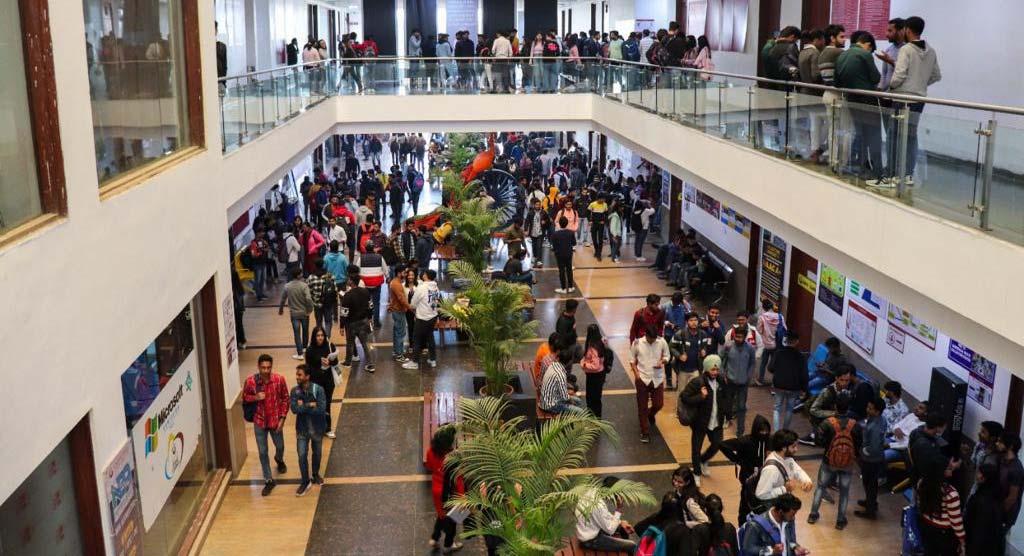
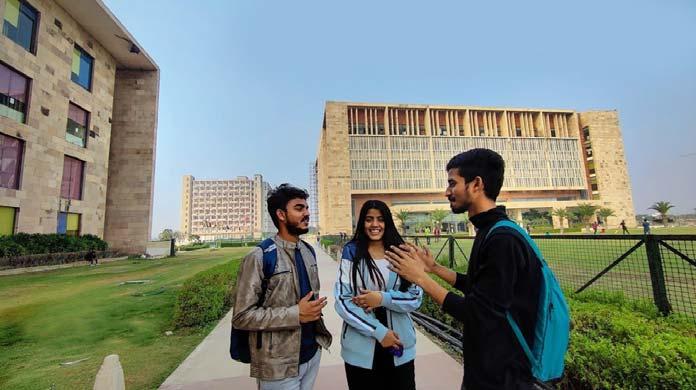 Subhankar Mishra
Subhankar Mishra
SEASONAL MAGAZINE



















































 of
of














 Dr. C. Rangarajan Chancellor
Dr. C. Rangarajan Chancellor










 Dr. MARIAZEENA JOHNSON, Chancellor
Dr. MARIE JOHNSON, President
Dr. MARIAZEENA JOHNSON, Chancellor
Dr. MARIE JOHNSON, President


 MARIA BERNADETTE TAMILARASI, Vice President
J. ARUL SELVAN Vice President
MARIA CATHERINE JAYAPRIYA Vice President
SEASONAL MAGAZINE
MARIA BERNADETTE TAMILARASI, Vice President
J. ARUL SELVAN Vice President
MARIA CATHERINE JAYAPRIYA Vice President
SEASONAL MAGAZINE

























 Prof. Pradipta Kumar Nanda. Vice Chancellor
Prof. Pradipta Kumar Nanda. Vice Chancellor


 Prof. Amit Banerjee - Pro-Chancellor
Prof. Amit Banerjee - Pro-Chancellor









 Subhankar Mishra
Subhankar Mishra
